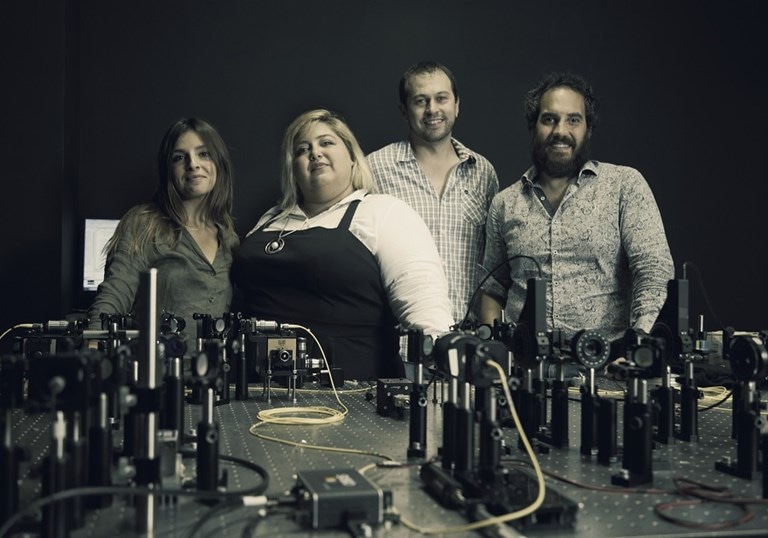Nov 19 2019
A recent study has demonstrated how enzyme reactions can be tracked in real time using quantum light. This latest study, which brings biology and quantum physics together, has important implications for developing quantum sensors intended for biomedical applications.
 A multidisciplinary group of researchers has demonstrated that quantum light controlled can be used to make accurate measurements in real time without disrupting enzymatic activity. Image Credit: Simonetta Pieroni.
A multidisciplinary group of researchers has demonstrated that quantum light controlled can be used to make accurate measurements in real time without disrupting enzymatic activity. Image Credit: Simonetta Pieroni.
The intricate molecules called enzymes play a major role in numerous processes within the human bodies. But these molecules cannot be studied easily through optical techniques because excess amounts of light tend to decrease their activity and can even cease it altogether.
A multidisciplinary research team has demonstrated that controlling light at the quantum or single-photon level could enable precise measurements without disrupting the activity of enzymes. The study has been reported in Optics Express, The Optical Society (OSA) journal.
Although it might be a few years before practical quantum sensors are achieved, this type of proof-of-principle experiment is important. It helps pinpoint the areas where we can start building shared knowledge with other fields and reveals where technological advancement is needed to make progress.
Ilaria Gianani, Research Team Leader, Università degli Studi Roma Tre
Single-Photon Control
Whenever biomolecules are investigated, high levels of light should be avoided as this can modify their behavior or properties. But it is difficult to achieve this because low levels of light may not offer a sufficient amount of information, and noise can easily obstruct the weak signal.
At present, enzymes are investigated using measurements carried out on assays. These assays are obtained from the primary sample so that the sample is not damaged with light. But this process is time-consuming and does not allow the enzymes to be directly observed in real time.
This issue was resolved by the scientists who successfully developed a setup that enabled them to precisely regulate the light at the level of one photon. This method made it feasible to use low levels of light without disrupting the enzymatic activity. It also offered the potential to realize a better sensitivity. In addition, the ability to directly address the sample enabled dynamic tracking with greater resolution.
Key to our success was a collaboration between quantum physicists, who know how to deal with photons, and biologists, who know how to deal with biological systems. Although it was difficult to exchange ideas at first, the team eventually grew together and developed a shared language that helped the work progress smoothly.
Ilaria Gianani, Research Team Leader, Università degli Studi Roma Tre
Gianani continued, “This collaboration wouldn’t have been possible without the supervision of Prof. M. Barbieri, principal investigator of the Quantum Optics Group.”
Tracking Enzyme Activity
The scientists utilized the novel method to monitor the changes in the chirality of a sucrose solution caused by the activity of an enzyme called invertase. Tracking the chirality—that is, the potential of a specified molecule to rotate the polarization of light—offers data that can be utilized to establish the number of sucrose molecules that have been processed by the enzymes.
These experiments demonstrated that with the help of quantum light, real-time enzyme activities can be studied without disrupting the sample.
This work is just one example of what quantum sensors could do. Quantum sensors could be used to optimally use light for countless applications, including biological imaging, magnetic field sensing and even detection of gravitational waves.
Ilaria Gianani, Research Team Leader, Università degli Studi Roma Tre
According to the scientists, certain technological aspects have to be addressed before their method can be used as a go-to technique for monitoring the reactions of enzymes. For instance, light losses are known to be an intense restricting factor, but the researchers believe that their study will help push technology developments that could deal with this issue.